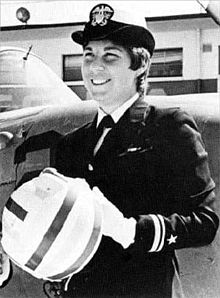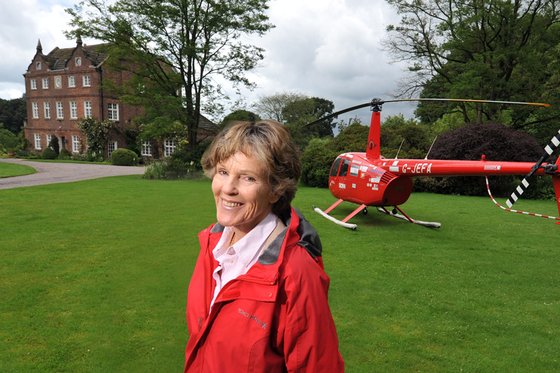Today, the Navy continues to lead the race in the number of female pilots across the armed forces. According to data collected by the Washington Times in 2013, women make up about 4 percent of Navy F-18 Hornet and radar-jamming jet pilots, just 2 percent of the Air Force’s fighter and bomber jocks, and less than 1 percent of the Marine Corps‘ fixed-wing pilots. Although the number of female pilots in the military remains small, we’ve made significant progress since the first female pilot was commissioned in the Navy in the 1970s.
Barbara Allen Rainey was the first female pilot to officially hold a position in the U.S. armed forces. Rainey followed in the footsteps of her military family; her father was an officer in the Navy, and her brother was a U.S. Marine Corps pilot. Before serving in the military, Rainey was an outstanding athlete at Long Beach City College in California, before transferring to Whittier College.
After graduating from Whittier, Rainey was commissioned in the United States Navy Reserve in 1970. Three years later, the Navy announced a test program that would train female Naval aviators. Having grown up around her Marine Corps pilot brother, Rainey couldn’t wait to take on the challenge. She applied to the program, and was accepted into the U.S. Naval Flight Training School.
Allen began flight training in 1973 at Naval Air Station Pensacola, Florida, along with seven other women. She was the first of her class to receive her Gold Wings, and officially became the first female aviator in the history of the United States military during a ceremony at Naval Air Station Corpus Christi, Texas, on February 22, 1974. As a Naval aviator, Rainey flew C-1s with a transport squadron in California, and became the first jet-qualified woman in the U. S. Navy before flying the North American T-39 Sabreliner.
Not even starting a family slowed down this pilot. Rainey became pregnant with her first daughter after marrying John C. Rainey, whom she met during flight training, but that didn’t stop her from flying. She transferred to the Naval Reserve in 1977. While a member of the Naval Reserve, she became pregnant with a second daughter. While pregnant, she qualified to fly the R6D, the Naval designation for the Douglas DC-6 airliner/transport aircraft.
In 1981, due to a shortage of Naval flight instructors, Rainey was recalled to active duty as a flight instructor with Training Squadron Three at Naval Air Station Whiting Field. In 1982, Lieutenant Commander Barbara Allen Rainey and her trainee died in a plane crash while practicing routine touch-and-go landings in a T-34C Mentor. As Bill Clinton put it during the groundbreaking ceremony for the Women in Military Service for America Memorial at Arlington National Cemetery in 1995, “Her story reminds us that, even in peacetime, those who wear the uniform face danger every day. Now she rests just behind me in the quiet of these sacred grounds.”
After the crash, questions arose about the cause, leading to family members of those who died filing a lawsuit against Beech Aircraft Corporation, portions of which eventually made it to the Supreme Court in “Beech Aircraft Corp. v. Rainey,” which ruled in John Rainey’s favor.
Although we’ve made some progress with the number of female pilots in the military, the percentages remain alarmingly low. Why do you think the armed forces continue to struggle recruiting female pilots? Let us know what you think in the comments.
[ulp id=’xkA7bnsbSMSAnwAm’]




